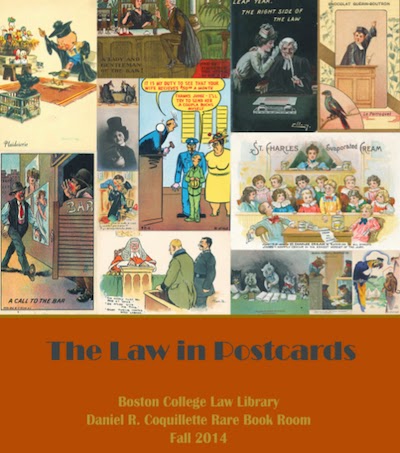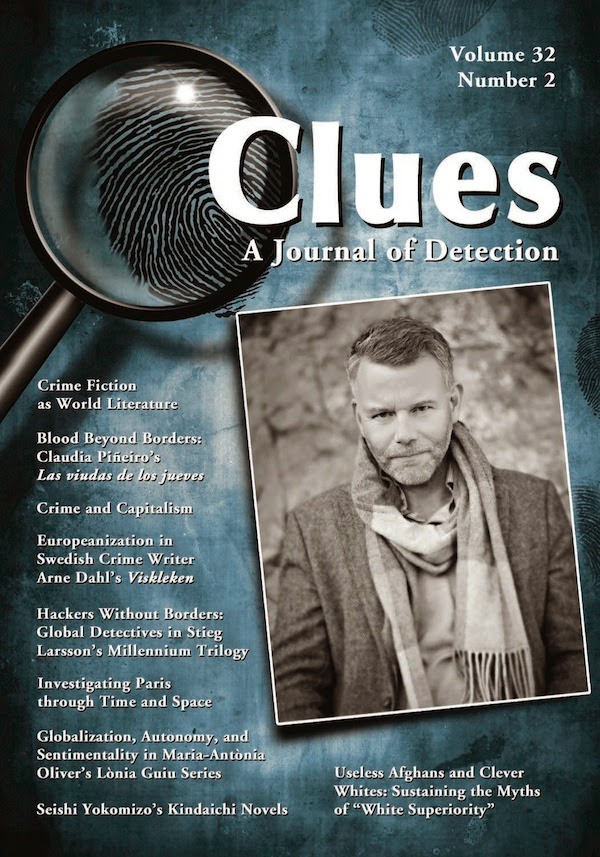Mystery author and Oxford professor John Innes Mackintosh Stewart, aka Michael Innes, was born today in Edinburgh in 1906. The creator of a long-running series with Sir John Appleby, Innes also wrote the novel Christmas at Candleshoe (1953), which was adapted as Disney's Candleshoe (1977) with screenplay work by Rosemary Anne Sisson (e.g., Sayers's Have His Carcase with Edward Petherbridge). In the film, unscrupulous David Niven thinks there is a cache of treasure in the house of Helen Hayes and enlists Jodie Foster to help him find it.
Featuring History of Mystery/Detective Fiction and Other Literary Ramblings of Elizabeth Foxwell
Tuesday, September 30, 2014
Monday, September 29, 2014
University of the Air: Bernard Herrmann.
 |
| Bernard Herrmann, left, with chorale director Roger Wagner, center, and director Ralph Levy 1954 TV production of A Christmas Carol |
Labels:
Alfred Hitchcock,
Bernard Herrmann,
film music,
mystery films
Friday, September 26, 2014
Friday Forgotten Book:
Atwater's Crime in Corn Weather (1935).
Was William Breen at that moment on a train or an airplane on his way to unextraditable ease with a few hundred thousands of the bank's funds in a modest suitcase at his feet? Mr. Vane knew how it could have been done. He had worked out a perfect system years ago. Now, of course, it would be too late—for him. Why hadn't he done it first? He pretended he believed it was his moral uprightness that had prevented, but as a matter of fact he was afraid of airplanes and got desperately seasick even in a rowboat on the lake. Of such things are virtue made sometimes. (Crime in Corn Weather 51)A tyrannical banker from a rural town in the Midwest disappears, and his neighbors suspect foul play in Mary Meigs Atwater's only mystery novel. Atwater's focus is the effect of the event on the residents, and there is a great deal of wisdom in her observations of people seeking to capitalize on the case (merchants, reporters) and those with sadder legacies (a World War I veteran, a young woman, a henpecked husband). Younger readers may not know what a switchboard is, and there is one appearance of the six-letter "N" word (in reference to a lawn jockey) that contemporary readers may find disconcerting.
Mary Meigs Atwater (1878–1956) was referred to as the "dean of American handweaving" and as "gun toting" and "chain smoking" in the Interweave Press 1992 reprint of Crime in Corn Weather (iii). She was a granddaughter of Montgomery C. Meigs, the Union quartermaster general during the Civil War who later played a key role in the development of Arlington Cemetery, the Pension Building (now the National Building Museum), and the Washington Aqueduct. Her sister, Bryn Mawr professor Cornelia Meigs, received a Newbery Medal for Invincible Louisa, a biography of Louisa May Alcott. In the Interweave Press edition of Crime in Corn Weather, there is a tantalizing reference to an unpublished mystery manuscript by Atwater.
Tuesday, September 23, 2014
Orczy's The Emperor's Candlesticks (1937).
 |
| Baroness Orczy, from the July 1908 Brooklyn Daily Eagle |
Labels:
Baroness Orczy,
espionage,
mystery films
Monday, September 22, 2014
Boston College's "The Law in Postcards."
Saturday, September 20, 2014
Clues 32.2: Global crime fiction.
Just published is vol. 32, no. 2 of Clues: A Journal of Detection—a theme issue on global crime fiction guest edited by Stewart King (Monash University) and Stephen Knight (University of Melbourne). If interested in ordering the issue or subscribing, email McFarland.
The cover features Swedish author Arne Dahl. The table of contents follows below. I will add links when available.
The Challenge of Global Crime Fiction: An Introduction
STEWART KING AND STEPHEN KNIGHT
Crime Fiction as World Literature STEWART KING
This article explores crime fiction within a world-literature framework. It argues that the study of national traditions can blind us to the dialogue across borders and languages between texts and authors. It proposes a reading practice that aims to develop a more nuanced understanding of this truly global genre.
Beyond National Allegory: Europeanization in Swedish Crime Writer Arne Dahl’s Viskleken KERSTIN BERGMAN (Lund University)
Swedish crime fiction is experiencing a strong move toward Europeanization; increasingly more novels are set in Europe and discuss European identities and transnational criminality. The author examines how national and European perspectives clash and interact in Arne Dahl’s Viskleken (Chinese Whispers, 2011), a novel featuring a multinational police team within Europol operating across borders.
Hackers Without Borders: Global Detectives in Stieg Larsson’s Millennium Trilogy NICOLE KENLEY (University of California, Davis)
The article argues that Stieg Larsson’s Millennium Trilogy is a response to the challenges of mediating digital crime. It suggests that as the technological aspects of global crime threaten to dissolve national borders, Larsson’s novels offer the computer hacker as a detective figure capable of partially managing these emerging threats.
Wednesday, September 17, 2014
Anna Katharine Green's
Three Thousand Dollars (1910).
 |
| Anna Katharine Green, from The Reader (June 1907) |
Tuesday, September 16, 2014
Creasey's Gideon's Way (TV, 1964-67).
John Creasey, thought to be one of the most prolific mystery authors ever, was born on September 17, 1908, in Surrey. The TV series Gideon's Way (aka Gideon C.I.D.) with John Gregson was based on Creasey's novels under the pseudonym J. J. Marric. These featured Scotland Yard's George Gideon (played by Jack Hawkins in the film Gideon's Day) and are important in the history of the police procedural. This episode, "The Tin God" (Nov. 1964), stars John Hurt in a tale about a gangster wanting revenge on the wife who put him in prison.
Labels:
J. J. Marric,
John Creasey,
police procedural
Monday, September 15, 2014
Coming soon: ME exhibition on pulp cover art.
Opening on October 3 at the Portland (ME) Public Library is "The Pulps," an exhibition of original cover art for the pulps that will include Tarzan, the Shadow, and Doc Savage. The exhibition, cosponsored by the Maine College of Art, will run until December 26.
Tuesday, September 09, 2014
Remembering Andrew McLaglen: Man in the Vault (1956).
Director Andrew McLaglen, son of actor Victor McLaglen, died on August 30 at age 94. Known for his work in Westerns (such as Gunsmoke), he also attracted early attention for his crime film Man in the Vault, in which locksmith William Campbell (Star Trek) is pressured by a mobster to steal $200,000 or face dire consequences to his girlfriend. Anita Eckberg and Paul Fix also star.
Monday, September 08, 2014
Beer and mystery.
Mystery Brewing Co. in Hillsborough, NC, produces rustic ales, and its taproom has a library. Its resident historian-librarian, Sarah Ficke, posts weekly on recommended books, which often are mysteries. One featured work, Contending Forces, is by early African American mystery pioneer Pauline E. Hopkins (best known in mystery for "Talma Gordon").
Wednesday, September 03, 2014
UCLA: "Exile Noir."
As part of its "Exile Noir" program this month, the UCLA Film & Television Archive plans to screen Bluebeard (1944); The Blue Gardenia (1953); Caught (1949); City That Never Sleeps (1953); The Dark Mirror (1946); Hollow Triumph (1948); Jealousy (1945); The Locket (1946); Sleep, My Love (1948); Sorry, Wrong Number (1948); and Whirlpool (1950).
It also notes the upcoming exhibition that will open at the Skirball Cultural Center on October 23: "Light & Noir: Exiles and Emigres in Hollywood, 1933-1950."
It also notes the upcoming exhibition that will open at the Skirball Cultural Center on October 23: "Light & Noir: Exiles and Emigres in Hollywood, 1933-1950."
Labels:
film noir,
Lucille Fletcher,
mystery films
Tuesday, September 02, 2014
"Twelve Angry Men" (TV, 1954).
Most people are familiar with the 1957 film starring Henry Fonda as the juror who isn't so sure that the defendant in a murder trial is guilty, but there was also an earlier Studio One version directed by Franklin Schaffner and starring Robert Cummings, Franchot Tone, Norman Fell, and Edward Arnold.
Monday, September 01, 2014
Academe: More notable U.S. espionage novels.
On the Academe blog Martin Kich (Wright State University) continues his series on "Fifty Notable American Espionage Novels" with the following:
• Helen MacInnes, Assignment in Brittany (1942)
• Colin MacKinnon, Finding Hoseyn (1987)
• Joe Maggio, The Company Man (1972)
• John P. Marquand, Stopover Tokyo
(1957; Mr. Moto takes on the communists)
• Wilson McCarthy, The Detail (1973)
• Charles McCarry, The Miernick Dossier (1973)
Here's a rundown of Kich's earlier choices.
 |
| Peter Lorre in The Mysterious Mr. Moto (1938) |
• Colin MacKinnon, Finding Hoseyn (1987)
• Joe Maggio, The Company Man (1972)
• John P. Marquand, Stopover Tokyo
(1957; Mr. Moto takes on the communists)
• Wilson McCarthy, The Detail (1973)
• Charles McCarry, The Miernick Dossier (1973)
Here's a rundown of Kich's earlier choices.
Labels:
espionage,
Helen MacInnes,
John P. Marquand
Subscribe to:
Comments (Atom)




